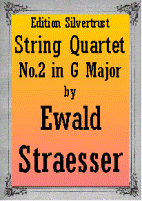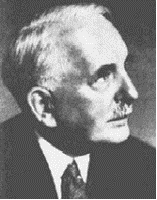Presents
Ewald Straesser
 |
 |
- Soundbites courtesy of Steve Jones |
String Quartet No.2 in G Major, Op.12 No.2
“Straesser's first two string quartets were published at the same time in 1901 as his Opus 12. A pleasant time is to be had playing this work. The first movement, Allegro con moto, has three themes, the third, which is especially effective, appears shortly before the end. The second movement, Prestissimo, could serve as an effective encore. After a short, wild introduction, Praeludium, comes a fleet tarantella set off by a charming waltz-like trio. Next comes a somber and powerful Andante in which a short agitated section appears in the middle. The finale, Allegro animato, quasi vivace, begins with a spirited solo in the viola and is full of Rheinland humor."—–Wilhelm Altmann, writing in his Handbook for String Quartet Players.
Ewald Straesser (also Sträßer 1867-1933) was born in the Rhenish town of Burscheid not far from Cologne. After studying music locally, he entered the Cologne Conservatory where he studied with Franz Wüllner. After graduating, Straesser held a teaching position there and then later became a professor at the Stuttgart Conservatory. Between 1910-1920, Straesser's symphonies enjoyed great popularity and were performed by the leading conductors of the day such as Artur Nikisch, Richard Strauss, Willem Mengelberg, Felix Weingartner, and Wilhelm Furtwängler. His chamber music was also frequently performed by the then active leading ensembles.
This is another original, very late Romantic work worthy of the attention of both amateurs and professionals. It deserves concert performance. Long out of print, we are pleased to bring it back.
Parts: $24.95